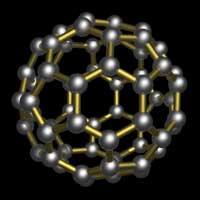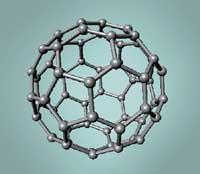Non-metallic magnets
2001/10/18 Roa Zubia, Guillermo - Elhuyar Zientzia
Typical magnets are metallic, made with iron or iron oxide. But scientists have long wanted to manufacture magnetic materials that do not need metallic atoms. These materials, being magnetic, would not be conductors; in some cases, the presence of magnetic electrical insulator can be very useful. On the other hand, in theory, they would be lighter and cheaper than conventional magnets.

Over the years, a large number of research has been carried out on ferromagnetic materials. The first molecular magnet was invented in 1972. In this magnet, instead of atoms, the molecules provide magnetism to the material. In 1986, magnetism produced by electrons of orbital p was discovered in an organic molecule with iron.
From then on they began to find organic molecules with natural magnetism, but in a very peculiar situation. On the one hand, this magnetism is "active" at very low temperature. In fact, the best organic magnet discovered so far should cool up to 36 kelvin to produce natural magnetism. On the other hand, the magnetism generated in this type of materials is very weak.
The group of the Swedish physicist Marakova has published this week in the journal Nature that polymerized fulerenes have their own magnetism at room temperature. These physicists have used a polymerized C 60 at high temperatures. In general, these molecules must be added an electron to induce magnetism, but in that study they have achieved it by polymerization.
However, many questions have been left unanswered. For example, it is not clear how the magnetic moment is created. The authors have published some speculations but cannot give a definitive explanation. On the other hand, a very weak magnetism is still reached, a hundred times weaker than the one containing the ferromagnetic material.

Gai honi buruzko eduki gehiago
Elhuyarrek garatutako teknologia






